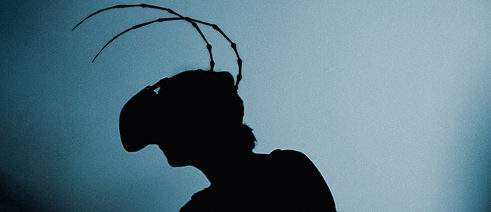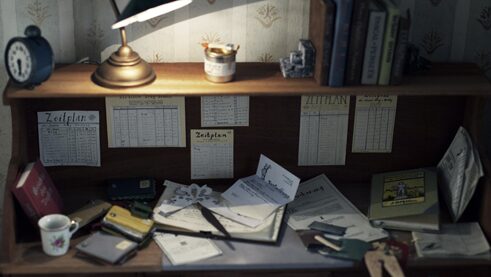VR Metamorphosis: VRwandlung
Kafka in virtual reality

“As Gregor Samsa awoke one morning from uneasy dreams he found himself transformed in his bed into a gigantic insect.” Thus begins the most well known novella of the twentieth century, Die Verwandlung or The Metamorphosis by Franz Kafka. In the “VRwandlung” theme room of Prague’s Goethe-Institut, with VR technology you can wake up as a huge insect in a room faithfully reproduced after the original.
“First you have to take off your shoes,” the programmer Eduard Fischer welcomes me. Just as I’ve slipped into the cosy slippers with odd sensors attached to the tips, I am equipped further with headphones, hand motion controllers and, of course, virtual reality glasses. Thus equipped and wired up, I wait a few seconds in absolute darkness. Then it begins: A light flashes on and I find myself in 1915, in Gregor Samsa’s room in the Old Town of Prague and in a completely different body.
From the page to virtual reality
Kafka’s story The Metamorphosis describes the feelings of a travelling salesman awakening one morning in the body of a beetle; it never resolves how and why this happened. The focus is rather on how he will come to terms with it: how will his parents react? And what will his boss have to say? Kafka’s expressionist narrative still puzzles us even after more than a hundred years. Now, the Goethe-Institut in Prague is resurrecting poor Gregor Samsa in the fantastical world of virtual reality. What does a beetle read?
| Photo: Goethe-Institut
“‘VRwandlung’ transfers Franz Kafka’s work from the pages of a book to virtual reality. The protagonist is no longer Gregor Samsa, but you,” explains Mika Johnson, the director who created the theme room with his young start-up team.
What does a beetle read?
| Photo: Goethe-Institut
“‘VRwandlung’ transfers Franz Kafka’s work from the pages of a book to virtual reality. The protagonist is no longer Gregor Samsa, but you,” explains Mika Johnson, the director who created the theme room with his young start-up team.
I am Gregor Samsa
And it’s true: In “VRwandlung,” I am Gregor Samsa. I am a disgusting, confused beetle. With growing fascination and a slight feeling of horror, I look at my new limbs: they are long, narrow, hairy, and there are quite a few of them. In the place of my belly is a hard shell, my feelers wiggle in my field of vision. And when I first see myself in the mirror, I’m terrified. On the other side of the door, my father begins to scold me, “Gregor ... Gregor, open that door now!”“Gregor’s room is the most impressive part of this ‘VR metamorphosis.’ It makes this project unique,” says Vojtěch Jankovský from the software company Achtung4k. “We really had to look at the story in detail. Following Kafka’s description, we created a very detailed model of Gregor’s room.” Everything is as it is in the story: the writing desk with books, the white iron bed, the floral pattern on the walls, the suitcases and the paperweight from the village of Zürau. “Whenever we were uncertain, the Franz Kafka Society helped us. The titles of the books on Gregor Samsa’s desk are the same that Franz Kafka himself was reading at that time,” adds Jankovský.